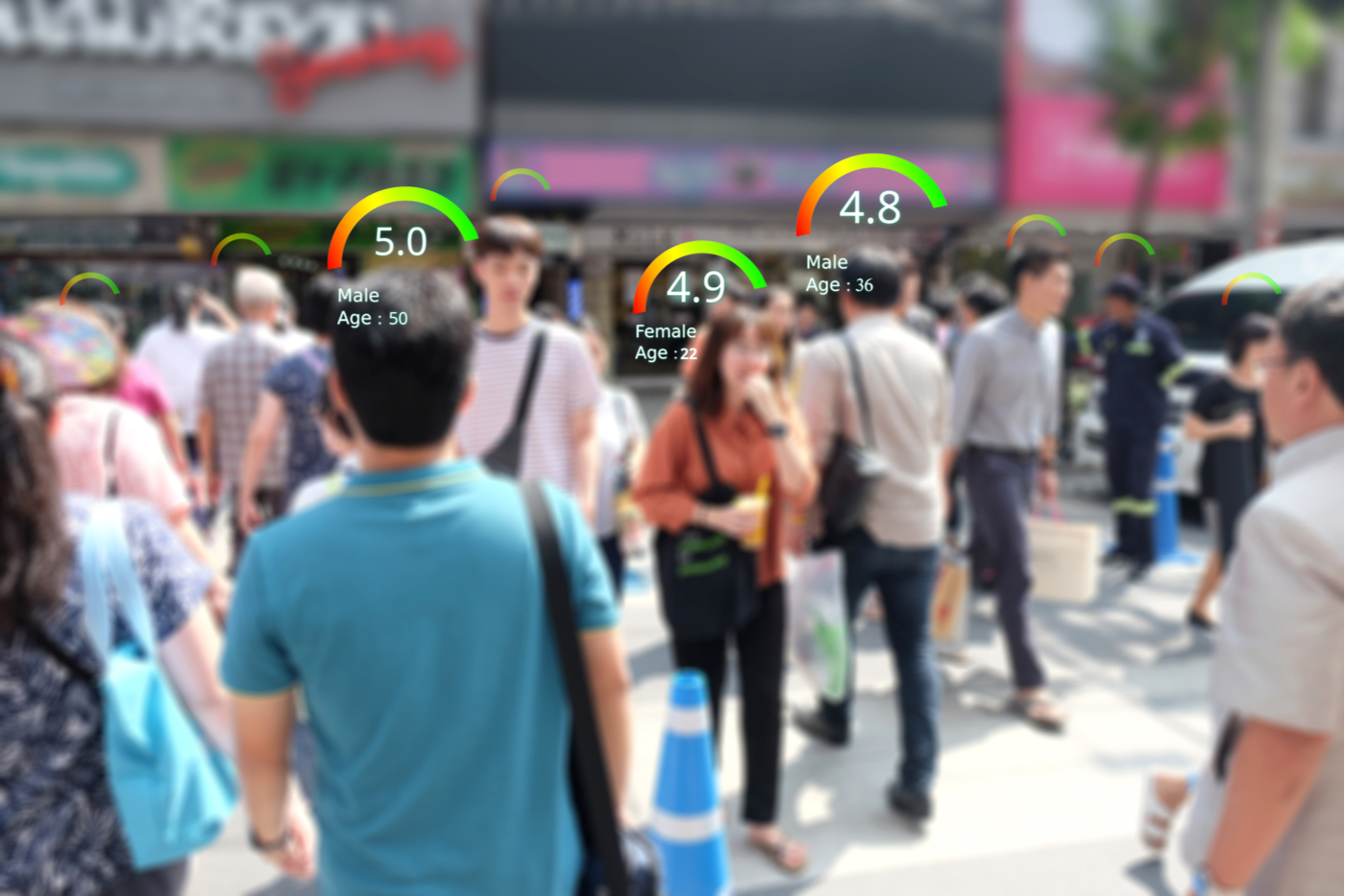In an extended interview, media scholar Andrey Mir, author of “Postjournalism and the death of newspapers”, talks about the social media-driven polarisation in society and explains why our future money may consist of attention, time, engagement, contribution and participation.
New Money Review: Andrey, why has the business of the media changed from news supply to news validation?
Andrey Mir: Social media have completely changed the way we consume news. Immediately after we wake up, we grab our phones and check what’s new on Twitter or Facebook. We can’t help but receive the news agenda from the posts of our friends and the news media teasers that we see in the newsfeed. By the time we visit a news media website, if we go there at all, by and large we already know what is going on.
So the only function left for the traditional media is to validate the significance of the news we have already learned from social media. The traditional media still have a publicly sanctioned authority to confirm and interpret the value of news, when and if we need it. They have therefore turned from news producers into news ‘notaries’.
Traditional media have turned from news producers into news notaries
The business of the media has changed dramatically as a result. Since the news is delivered to us for free and almost forcefully, it can no longer be a commodity. Our subscription to the traditional media, which was once transactional, is turning into a sort of notary fee. People no longer buy the news. But at least some people are still willing to pay an authoritative, traditional institution to validate that news.

A consumer of old media
In other words, the media have refocused from operating with news to operating with values. Hence the politicisation of the news media, a historical shift that has happened in an instant. It has brought us polarisation and, with it, events like Trump and Brexit. There was no liberal bias or right-wing conspiracy behind such changes.
(NMR): What impact has this had on the broadness or narrowness of the news agenda?
(AM): Since people reach out to the media only when they need to confirm or disprove the most triggering news, the media must focus on this news. Reporting becomes commenting and the range of coverage does not matter. What matters is the strength of argumentation and persuasion.
As a result, the media all concentrate on the same topics and compete more and more to obtain approval or disapproval of the news’s value, rather than in a search for new scoops. The switch from news supply to news validation inevitably leads to a concentration of the discourse.
In the US the most valuable egg was Trump
In Swift’s “Gulliver’s travels”, the great Lilliput nation was irreconcilably divided by the question of which end of an egg should be cracked, but what united them was the egg. The media’s business, which is now based on the validation of pre-existing values, tends to narrow the scope to the smallest number of the most rage-generating eggs. In the US the most valuable egg was Trump, of course. But similar processes are happening everywhere.
All this strengthens a ‘swarming effect’ in the media. Everyone wants to confirm the value of the news by the standards of the biggest swarm. The subscription results clearly show that only a few media organisations have succeeded in attracting a swarm of readers: the New York Times and the Washington Post, along with the leading news cables, have had tremendous success in the business of news value validation. But all the others have continued their free fall.
So, concentration in discourse is accompanied by media concentration. The switch from news supply to news validation has killed the diversity of the agenda and killed local journalism. This was not a plot and there is no guilty party; these are simply the environmental conditions.
(NMR): Why is journalism, in your view, becoming ‘postjournalism’?
(AM): For the entire 20th century, advertising brought in 70-80 percent of the media’s revenues. From approximately 2000 onwards, the media started losing their advertising business and their audience to the internet. And from about 2014, a seismic event happened simultaneously around the world: ad revenue plummeted below the level of reader revenue. The media started being dependent on readers’, not advertisers’ money.

Invented in 1843, the rotary press helped make newspapers into a mass product
This change has not been noticed but it has drastically changed journalism. Advertisers were more likely to choose the media that addressed the affluent audience and maintained economic and political stability. Ad money incentivised the media to avoid controversial and political topics and to align with the interests of the ruling and business elites. Herman and Chomsky described this mechanism as the ’propaganda model’ in their 1988 book, “Manufacturing Consent”. At that time, the very notion of the ‘corporate media’ appeared—a concept which is no longer relevant, by the way.
Postjournalism has traded truth for justice
Now, advertisers have no interest in incentivising the embellishment of reality by the media. On the contrary, the media business that depends on reader revenue has to trigger readers’ anxiety. Only scared and frustrated readers will likely pay the media for confirmation or condemnation of the most triggering news.
A media system based on ad revenue manufactures consent. A media system based on soliciting the audience’s support manufactures anger. The ad-driven media produced happy customers. The reader-driven media produces angry citizens. The former served consumerism. The latter serves polarisation.
The media are incentivised to amplify and dramatise issues whose coverage is most likely to be paid for. This makes former journalism mutate into postjournalism. Postjournalism is a mutated form of journalism. It arrived after the news media lost their generous funding from advertising and became dependent on the audience’s support.
Journalism explored what existed, postjournalism judges if the highlighted is right. Journalism sought truth, postjournalism has traded truth for justice. Journalism looked for the world-as-it-is, postjournalism covers the world-as-it-should-be. Journalism used to come from the covered object, postjournalism comes from the covering subject.
As postjournalism needs to amplify people’s frustration for profit, it spirals up into the amplification of extremes and, eventually, into polarisation. The outraged and polarised audience is a side-effect of this new business model. Again, this is a purely environmental phenomenon, caused by the tectonic shift in media technology and the economy.
(NMR): Why is polarisation ‘the software of digital capitalism’?
(AM): The biggest issue of the attention economy is not fake news. Like a virus, fake news sooner or later provokes immunity. The increase in the flow of fake news decreases its efficiency: the more people encounter fake news, the less they trust it. Fake news is an annoying but self-mitigating phenomenon.
The real issue of the entire media system is polarisation. I’ve already described how the news media produce and maintain polarisation because of the switch from news supply to news validation and from ad revenue to reader revenue. But social media have their own embedded mechanisms of polarisation, too, and even stronger ones.
Social media are designed to encourage user engagement. The more people engage, the more data they give, enabling the better targeting of ads. In return, social media provide users with a better response from others—through likes, comments, shares and other forms of automated and accelerated social exchange. Better engagement on social media therefore serves both the user—through increased socialisation—and the social media firm’s business interests.
Polarisation is an inherent by-product of social media
But the service offered to users comes with a disservice. Any efforts, whether deliberate or subconscious, that aim to cause a reaction are more likely to produce one. Something habitual or moderate has a lower chance of attracting attention. So the very settings of the ecosystem incentivise people to edge towards extremes in their social exchanges.

Going viral on Facebook
Many studies show this regularity. For example, a study of food image sharing showed that the most liked and commented images were those of food that looks less like what regular people eat: for example, enormous hamburgers. The same mechanism works in any kind of social media discussion.
Social media unavoidably provoke extremes. The impact of this mechanism on an individual interaction is tiny. But the huge number of interactions adds up to polarisation. Since social media depend on better user engagement for a dual purpose—the increase in the ad business and in users’ activity—they cannot reverse the effect of the amplification of extremes. Polarisation is an inherent by-product of social media.
Thus, both old and new media now have polarisation embedded in their very organisms. Since media are the hardware of digital capitalism, polarisation is its software.
(NMR): What is the role of the journalist in the postjournalism era?
(AM): The process of the mutation of journalism into postjournalism is painful. It has an extreme, adverse impact on the lives of concrete people in the media industry and on society in general. First, the old professional standards of journalism have started changing. Professional standards are meant to protect the jobs of professionals from the impact of the environment. When the most powerful environmental force belonged to advertisers, the standards of journalism were based on objectivity, rigorous investigation, covering conflicts from both sides, and so on.
Ideological zeal has become a necessary professional quality
When readers armed with Twitter became the most powerful environmental force and started demanding the validation of their news values, it is only logical that objectivity turned into a sin. On the contrary, ideological zeal has become a necessary professional quality. This was something normal in the early 19th century, when journalism was funded by political parties, but was unheard of in the 20th century.
The entire system is now rebuilding itself under the pressure of the new business model. It is amazing to observe how the leading media call for censorship, both for each other and for those who are out of the industry. Meanwhile, all of a sudden the leading professors of journalism call for proselytism as a professional standard.
(NMR): If the past emergence of newspapers was ‘linked to the liberation of the national bourgeoisie’, where is the social media era leading us?
(AM): The social media era has already led us to what Martin Gurri has called ‘the revolt of the public ’. I have described this process as the emancipation of authorship. Before the arrival of the internet, there were approximately 300 million people able to communicate their ideas beyond their immediate surroundings. Now, thanks to the internet, the number of authors has reached 3.4 billion in just 30 years.
We all live inside an era of the explosion of authorship
We all live inside an era of the explosion of authorship. It impacts all the areas of life. In politics, the emancipation of authorship has given people access to the setting of agendas. The elites and the media, their megaphone, have lost their monopoly in this area, a process Martin Gurri describes as the global ‘crisis of authority’. Starting with the first wave of social media proliferation that captured young progressive urbanites—Occupy Wall Street, the Arab spring, the Indignados movement in Spain, and so on—a tsunami of anti-establishment protests has now struck the world.

Arab spring protest in Yemen, 2011
However, by 2016, social media had spread widely enough to allow other social strata to participate in agenda-setting. No longer was it just the educated, urban and progressive youth who were empowered. A new wave of conservative protests took hold. In a sense, Trump’s ascent was the successful completion of the Occupy Wall Street movement, but based on a different demographic group.
Old media have already shown how they impact society. Now we need to look at new social media. Old media were based at least in part on text, on literacy. Literacy conveys linearity and therefore requires the elaboration of meaning. Now not only has the length of text shrunk on social media, but the necessity of communicating only through text is vanishing as well.
The new mode of agenda-setting will most likely bring a new wave of upheavals, this time even more radical
With the progress in media hardware towards the newest social media, a new orality is coming to replace old literacy. The means of digital social communication in the newest media, such as Twitter or TikTok, resemble the vocal-dance communicative performance of primeval humans in our pre-speech era. Interjection, the least semantic form of verbal expression, is becoming the most efficient semantic carrier. Digital orality is based on exclamations and digital gestures. It aims to persuade rather than inform. It operates with emotions and objects—memes, pictures, videos, and so on—directly, rather than with meanings.
This is going to shape agendas in a completely new way, with no requirements for literacy, rationality or fact-checking. The new mode of agenda-setting will most likely bring a new wave of upheavals, this time even more radical. It will start, again, with the younger demographics who are completely out of touch with traditional political parties’ agendas, and who are extremely anti-institutional.
(NMR): In a recent interview on New Money Review, media scholar Lana Swartz said that social media apps will soon become indistinguishable from money. Do you agree?
(AM): Dr. Swartz said that money is a sort of media and it certainly is. The circulation of money is an exchange of communication. I would look at it in even more general terms. Essentially, capital became the first social network on a planetary scale. Capital emancipated value from the constraints of the physical carrier or producer and thus enabled the free communication of pure value across markets and territories.
It is worth mentioning that Adam Smith considered himself a moral philosopher. He believed that people are egoistic, but that the invisible hand of the market makes them reckon with the interests of others, regardless of their willingness to do so.
In just two centuries, the ecosystem built from this medium—capital—created a society of prosperity that had previously never been seen. As Ortega-i-Gasset pointed out in 1930, by the end of the 19th century ‘mass-man’ got used to demanding the level of consumer provision and social security that was unaffordable to the nobles just a century before.
Currencies will be derived from such assets as attention, time, engagement, contribution and participation
Social networks employ the same principle of purified universal connectivity. Capital enabled the unrestrained communication of values; social media enabled the unrestrained communication of meanings. Just like capital, the invisible hand of social media connects all the acts of the supply of meaning to all the acts of the demand of meaning. In this way, meanings become redistributed across industries and markets, that is, across themes and social strata. In the same way as Ortega’s 19th century mass-man, people are now demanding to be heard at a level that was unaffordable even to the members of elites just 30 years ago.
Now, meanings and values are going to merge in some way. Obviously, new types of currency will arise, reflecting different amounts or combinations of meaning and value—or we can also call it ’significance’. Those currencies will be derived from such assets as attention, time, engagement, contribution and participation. We already have this kind of currency in the game industry. Some of these principles are represented in bitcoin. We have an entire new area of digital political economy to be described, including the work of attention, productive forces, users’ participation as labour in the form of productive consumption, and so on.
(NMR): Can we prevent money following the social media route towards polarisation and tribalism? What kinds of money should we be building?
(AM): Yes, we can. China does it. Social scoring is the digital equivalent of money. People’s contribution of time, loyalty, attention, and right behaviour is converted into an asset whose positive or negative value is used for conducting—or not conducting—transactions. The logic and beauty of social scoring as a currency system are awe-inspiring. The system of controlled social scoring allows us to rewrite and reverse the negative settings of the social media ecosystem, such as extremes’ amplification and polarization. But with this solution comes its own price, in the form of state- or corporation-controlled digital authoritarianism.
The logic and beauty of social scoring as a currency system are awe-inspiring
The authoritarian risks of converting engagement, loyalty and attention into a currency are huge and yet to be recognized. This will be obviously done by algorithms. Sooner or later, the algorithms will calculate the value of our digital contribution and allocate a certain amount of digital currency for us to make a digital living; and then a physical living too, until they merge. The work of these algorithms will have the most improbable and unpredictable outcomes and side-effects. The future upheavals, no doubt, will be even more captivating than those we are living through now.

Algorithmic social credit scoring system
(NMR): In an era of media polarisation, how can the centre ground ever attract sufficient attention and support?
(AM): This is a great question. Those who manage to answer it will surely deserve the Nobel Peace Prize in the truest sense of this title. So far we can see no natural environmental forces that we might use to help answer this question. Of course, there is always a space for personal dignity in digital behaviour, but, honestly, no rational personal efforts, even combined with those of others, can overcome the environmental force.
Media literacy is an art of media abstention
Perhaps the pain which society experiences from polarisation will in time confer some form of resistance or immunity. At this stage, it is obvious that polarisation studies are also media studies. In order to comprehend and, possibly, mitigate polarisation, we need to deal with media, not with politics or psychology. Within the framework of media ecology, a search for solutions can lead in two directions: towards media education and towards media engineering.
Media education must be aimed at not how to use media but at how not to use them. Media literacy is an art of media abstention in a broad sense—starting with restraining oneself from performing certain acts and activities and ending with full digital withdrawal.
A very important part of media education relates to raising the awareness of how media polarise users. The users are not people who would like to annihilate each other; but the systemic design of the media environment makes people lean to extremes in order for the system to capitalise on polarisation. Exposing these environmental forces will help people to avoid the dehumanisation of opponents and tolerate, at least to some degree, the otherness of others on social media and in the news media.
Media educational resistance to polarisation is theoretically well-founded: it is clear what to do. Media engineering is a much harder task. The search must be conducted, indeed, in the areas of amplifying the centre instead of the extremes—if this is possible at all. Eventually, the correct question might be not how to get rid of polarisation, but how to live with it.
Andrey Mir (Miroshnichenko), teaches communication and culture at York University in Canada. His website is human-as-media.com and he tweets as @Andrey4Mir.
Sign up here for the New Money Review newsletter
Click here for a full list of episodes of the New Money Review podcast: the future of money in 30 minutes
Related content from New Money Review









